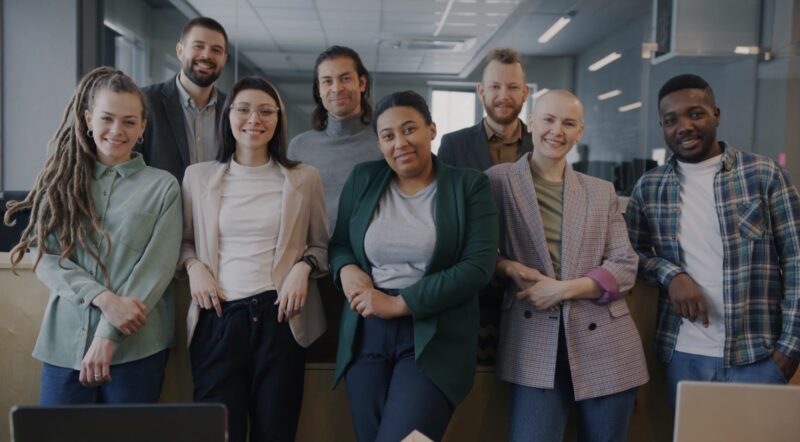Cultural diversity, often known as multiculturalism, acknowledges and values so many differences among cultures. In today’s interconnected world, embracing these differences has never been more important.
Let’s explore why cultural diversity matters, how it manifests in various settings, and the significant benefits it brings to our lives.
What Is Cultural Diversity?
When it comes to cultural diversity, it’s all about embracing the uniqueness in each and every one of us. We all come from different walks of life, with our own backgrounds, experiences, and traditions that make us who we are.
Whether it’s our race, ethnicity, sexual orientation, religion, language, gender, age, abilities, or even our socioeconomic status – the diversity in our world is what makes it such a rich and vibrant place. It’s so important to recognize and respect these differences, to truly understand that we’re all one-of-a-kind.
We shouldn’t just tolerate diversity but celebrate it! When we open our minds and hearts to the amazing array of cultures and perspectives around us, we can learn so much and grow in profound ways.
Key Aspects of Cultural Diversity
- Recognition: Acknowledging the existence of various cultural identities and practices.
- Respect: Valuing and respecting different cultural expressions and ways of life.
- Empowerment: Encouraging individuals from diverse backgrounds to share their unique perspectives.
- Celebration: Actively celebrating and integrating different cultural practices into daily life.
Cultural Diversity in the Workplace

These days, workplaces are big, colorful, and woven together with people from all walks of life. You’ve got your young guns, your seasoned vets, people from different cultures and corners of the world.
And that diversity? It’s a superpower for any organization. But it also means you have to be intentional about how you manage it all. When you’ve got such a varied group, it takes a bit of finesse to make sure everyone’s on the same page and working together like a well-oiled machine.
You can’t just go in with a one-size-fits-all approach and expect it to work. You have to be thoughtful, empathetic, and adaptable. Get to know your team, understand their unique perspectives and needs, and then create your strategies accordingly.
Manifestations in the Workplace
- Diverse Teams: Teams comprising people of various ages, cultural backgrounds, and experiences.
- Anti-Discrimination Policies: Policies that actively oppose discrimination and promote equality.
- Inclusive Practices: Practices that ensure all voices are heard and valued.
Benefits of Embracing Cultural Diversity at Work

- Increased Innovation: Diverse teams bring varied perspectives, leading to more innovative solutions.
- Enhanced Productivity: An inclusive environment fosters greater employee engagement and productivity.
- New Opportunities: Diversity opens up new markets and opportunities for business growth.
- Better Problem-Solving: Different perspectives can lead to more comprehensive problem-solving approaches.
- Improved Customer Service: A diverse workforce can better understand and serve a diverse customer base.
Strategies to Foster Cultural Diversity
- Revamping Hiring Processes: Ensuring job descriptions and hiring practices are inclusive.
- Inclusive Hiring Materials: Auditing materials to remove any bias and promote inclusivity.
- Diversity Consultants: Hiring experts to guide and improve diversity initiatives.
- Training Programs: Training employees on cultural competence and unconscious bias.
Creating an Inclusive Environment
- Cultural Celebrations: Celebrating the various cultures of employees.
- Socioeconomic Considerations: Offering tailored benefits packages that consider employees’ diverse needs.
- Diversity and Inclusion Council: Establishing a council to continuously drive and monitor diversity efforts.
Cultural Diversity in Education

Educational settings are rich grounds for fostering cultural diversity. Schools and universities can play a pivotal role in promoting inclusivity and preparing students for a multicultural world.
Manifestations in Education
- Religious Acceptance: Allowing and respecting various religious practices within educational institutions.
- Cultural Sharing: Encouraging students from diverse backgrounds to share their cultures.
- Diverse Learning Experiences: Supporting diverse learning styles and experiences to cater to all students.
Benefits of Cultural Diversity in Education
- Deep Learning: Exposure to different cultures enhances students’ learning experiences.
- Confidence and Growth: Students gain confidence and grow by interacting with peers from various backgrounds.
- Future Preparation: Preparing students for future careers in a globalized world.
- Empathy: Fostering empathy and compassion among students by exposing them to diverse perspectives.
How to Support Cultural Diversity

Supporting cultural diversity requires active engagement and a willingness to learn and grow.
Practical Steps
- Interacting with Different Cultures: Engaging with people from different cultural backgrounds.
- Open-Mindedness: Keeping an open mind and being willing to learn from others.
- Advocating for Diversity: Promoting diverse hiring practices in your workplace.
- Traveling: Experiencing different cultures firsthand by traveling.
- Reading Diverse Literature: Expanding your perspective by reading books from diverse authors.
- Consuming Diverse Media: Watching films, listening to music, and appreciating art from different cultures.
- Learning New Languages: Gaining a deeper understanding of other cultures by learning their languages.
Challenges to Creating Diversity

Creating and maintaining a diverse environment is not without its challenges.
Common Challenges
- Geographic Location: Some areas may have less access to diverse talent pools.
- Budget Constraints: Financial limitations can hinder diversity initiatives.
- Potential Harassment Issues: Ensuring a safe and respectful environment for all employees.
- Communication Gaps: Bridging language and cultural communication barriers.
- Focus on Qualifications: Ensuring hiring practices focus on qualifications and not just diversity quotas.
Final Thoughts
Cultural diversity isn’t just some trendy phrase – it’s the real deal, a vital part of our world today. Think about it – whether you’re at your job or in the classroom, when we embrace and celebrate our differences, amazing things can happen.
Creativity and new ideas start flowing, we develop deeper understanding of each other, and we get way better at solving problems as a team. It all comes down to recognizing and appreciating what makes each of us unique.
When we do that, we can build spaces where everyone feels welcomed, included, and empowered to reach their full potential. It’s not always easy, but the payoff is huge – more harmony, more innovation, and a richer experience for all.

